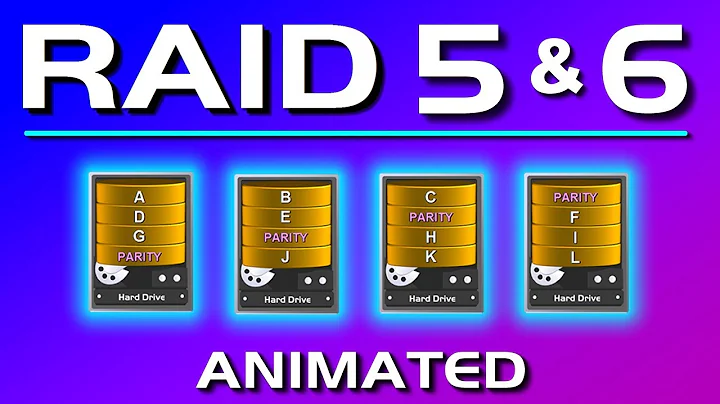RAID5 vs RAID4 purpose of floating parity
There is a performance difference in that with RAID 4 each change requires writing to the single parity disk, which means things can queue waiting to update the parity data on that disk.
With RAID 5 you have a significant reduction in this because the parity update load is spread across multiple disks, so there's less chance if getting stuck in a queue.
Here's a nice link from Fujitsu with a short explanation and some nice animations to help clarify the performance/penalties of RAID 4 (as well as other RAID levels).
Related videos on Youtube
Wakan Tanka
Enthusiastic and passionate for computers and technology, my workhorses: perl, bash, python, tcl/tk, R. LaTeX, Unix
Updated on September 18, 2022Comments
-
 Wakan Tanka almost 2 years
Wakan Tanka almost 2 yearsI still did not get why is RAID5 better than RAID4. I understand both computes parity bits that are used for recovering if some failure occurs, the only difference is in storing those parity bits. I have borrowed diagrams from here How does parity work on a RAID-5 array
A B (A XOR B) 0 0 0 1 1 0 0 1 1 1 0 1RAID4
Disk1 Disk2 Disk3 Disk4 ---------------------------- data1 data1 data1 parity1 data2 data2 data2 parity2 data3 data3 data3 parity3 data4 data4 data4 parity4Lets say that first row is:
data1 = 1 data1 = 0 data1 = 1 parity1 = 0 (COMPUTED: 1 XOR 0 XOR 1 = 0)RAID5
Disk1 Disk2 Disk3 Disk4 ---------------------------- parity1 data1 data1 data1 data2 parity2 data2 data2 data3 data3 parity3 data3 data4 data4 data4 parity4Lets say that first row is:
parity1 = 0 (COMPUTED: 1 XOR 0 XOR 1 = 0) data1 = 1 data1 = 0 data1 = 1Scanarios:
1. RAID4 - Disk3 FAILURE:
data1 = 1 data1 = 0 data1 = 1 (COMPUTED: 1 XOR 0 XOR 0 = 1) parity1 = 02. RAID4 - Disk4 (parity) FAILURE:
data1 = 1 data1 = 0 data1 = 1 parity1 = 0 (COMPUTED: 1 XOR 0 XOR 1 = 0)etc.
In general: when RAID(4 or 5) uses N disks and one fails. I can take all remaining non failed disks (N-1) and XOR (since XOR is associative operation) values and I will get the failed value. What is the benefit of storing parity not on dedicated disk but rather cycle them? Is there some performance benefit or what? Thank you
-
 Wakan Tanka about 10 yearsVery nice animation. Thnak you
Wakan Tanka about 10 yearsVery nice animation. Thnak you -
StarCat about 4 yearsThat might be the case for OWC, but it’s not true in general due to the reasons given in zx485’s answer. It would also be a good idea to provide a reference (like a link to the article you’re referring to).
-
Zathras about 4 yearsGood point. Here’s a link. macperformanceguide.com/… Let’s be clear the argument against RAID 4 would be in a situation where a group of users is accessing the data, which can lead to accessing the parity disk slowing things down. In a single user’s situation over a Thunderbolt 3 connection is simply will not be an issue and RAID 4 is likely going to be faster.




